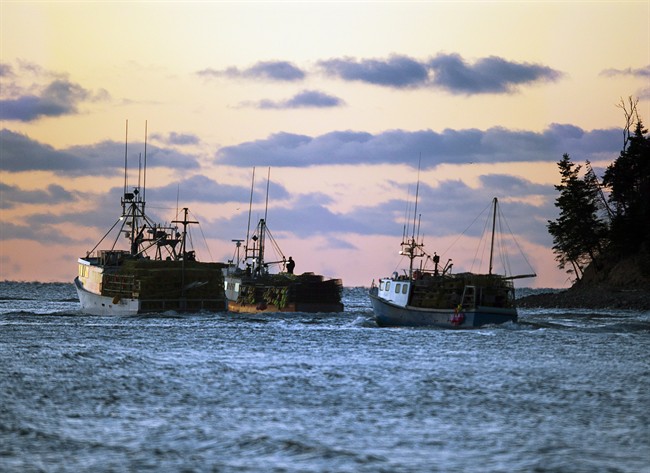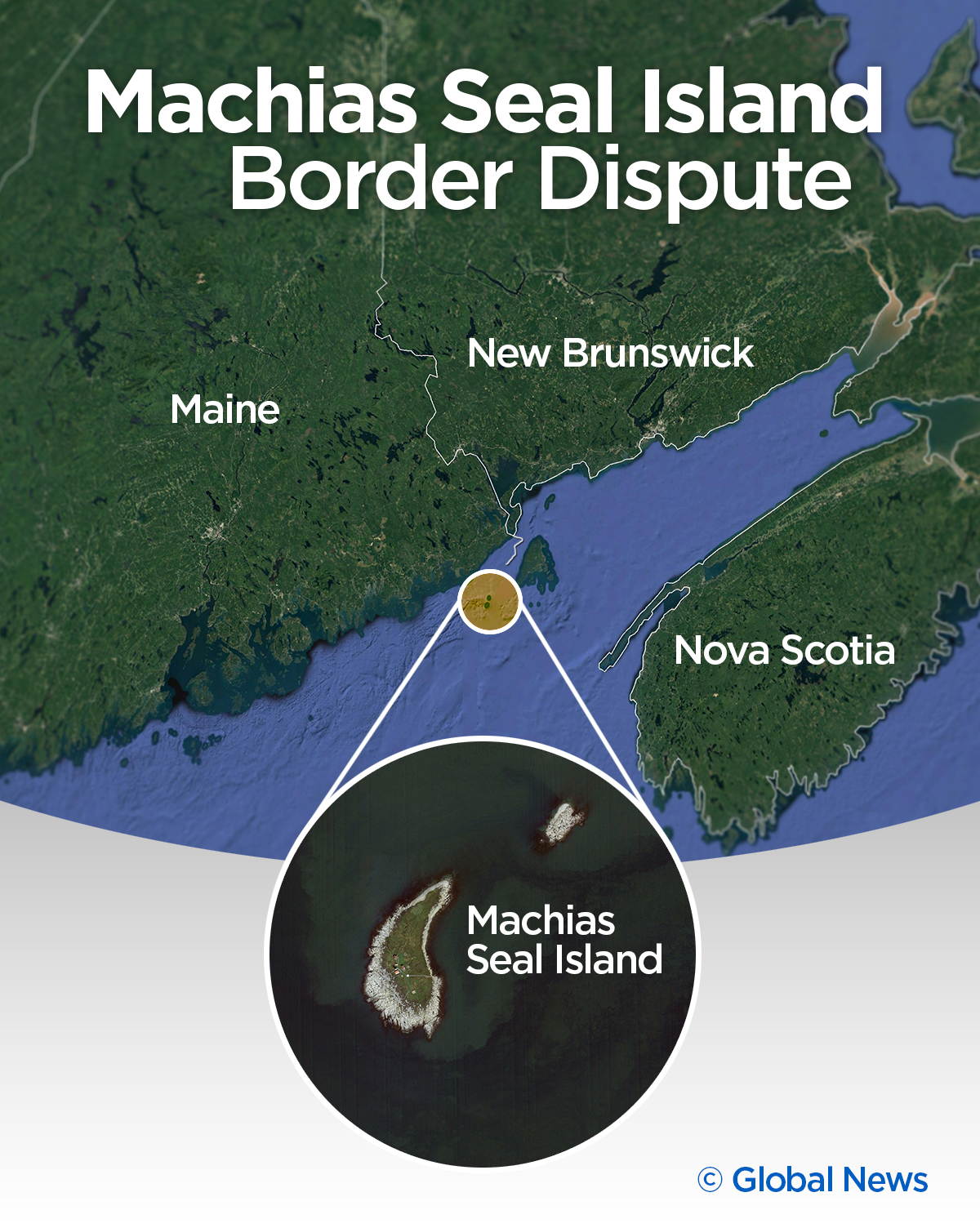Finding Machias Seal Island on a map requires a fair bit of squinting.

The tiny island is only about 550 metres long and 250 metres wide, shaped like a tear drop and is entirely treeless. Apart from a lighthouse keeper and a couple of researchers studying the island’s seabird colonies, there are no other inhabitants, and only a little over 1,000 people — mostly avid birdwatchers — visit the rocky outpost each year.
But while the island itself is sparsely inhabited, the surrounding waters are not.
READ MORE: N.B. fishermen say Canadian fishing boats being intercepted by U.S. Border Patrol
The lucrative supply of fish and lobster in the deep waters surrounding the island have historically formed a large part of the dispute over whether Canada or the United States can claim ownership of what is known as the “grey zone,” where Canadian and American claims overlap into a territorial dispute.
It’s a dispute that dates back centuries.
Today, Machias Seal Island is a migratory bird sanctuary maintained by the Government of Canada.
The lightkeeper on the island gets flown in every few months from the Canadian Coast Guard, which has staffed it for more than 100 years, and only two small tour boats with about 15 people each from Maine and New Brunswick are allowed to arrive each day.
Along with researchers, visitors come to catch a glimpse of the more than 100 types of land and seabirds that stop in at the island as they migrate.
Tensions over who owns the island flared briefly in the 1980s and again in 2012, but the dispute stretches back to the very foundations of British North America.
In 1621, the British Crown granted the lands that make up what is now Nova Scotia, New Brunswick, Prince Edward Island and the Gaspe Peninsula to a Scotsman called Sir William Alexander, the Earl of Stirling.
The problem, though, was those territories had already been claimed by the French as a colony known as Acadia.
In the 1713 Treaty of Utrecht, the French handed over the territories that made up Acadia to the British, and in 1783, the Treaty of Peace ended the Revolutionary War between Great Britain and the American colonies.
That 1783 agreement stated that islands within roughly 112 kilometres from the shore of America would belong to the United States
But that treaty also excluded “such islands as now are, or hereafter have been within the limits of the said province of Nova Scotia.”
The Canadian government argues that those terms included Machias Seal Island and that therefore, it is Canadian territory.
The Americans argue the agreement voided prior British – now Canadian – claim to the island.
WATCH BELOW: Hundreds of lobster fishermen protest changes to industry

The dispute threatens to boil over pretty regularly, and that’s exactly what has happened over the past two weeks.
On June 25, Laurence Cook, a spokesperson and leader of a group of Canadian lobster fishermen, posted on Facebook that U.S. border patrol agents had stopped another local fisherman in the grey zone under the guise of “looking for illegal immigrants.”
READ MORE: Fishermen’s group says Ottawa overreacting with new fisheries closure in Bay of Fundy
According to the Grand Manan Fishermen’s Association, which represents professional fishermen around southern New Brunswick, fishermen from both Canada and the United States have shared the grey zone waters for years.
In a statement issued on July 4, the association said it had received reports of several incidents of fishermen from the Grand Manan area being approached by U.S. border patrol agents while on the water.
“Our understanding is that this was part of a regular exercise being conducted along the U.S. marine border,” the association said in a statement.
WATCH BELOW: Fisherman not happy with new rules to protect endangered whale

A spokesperson for the Canada Border Services Agency said its officers were not involved in the matter.
That’s because CBSA agents are responsible only for enforcing the law at official ports of entry; enforcement between ports of entry falls to the RCMP.
Global News requested clarification of whether RCMP is or could become involved, but has not yet received a response.
However, a spokesperson for Global Affairs Canada said the government is working with American counterparts to probe the matter
“Canada continues to investigate these incidents that occurred in Canadian waters, including through engaging with U.S. agencies involved in the matter,” said John Babcock, spokesperson for the department.
“Canada’s sovereignty over the Machias Seal Island and the surrounding waters is long standing and has a strong foundation in international law. Until the matter of the boundary is resolved, we will continue to take practical steps with the U.S. to ensure that the area is well managed.”
He added, “Canada and the U.S. have a long history of cooperation which ensures that fishing in this area in well-managed and safe for both countries.”





Comments